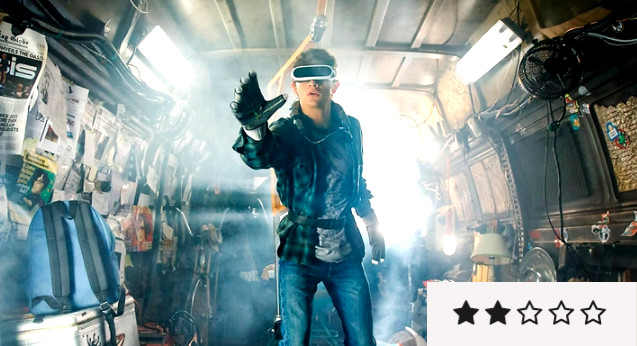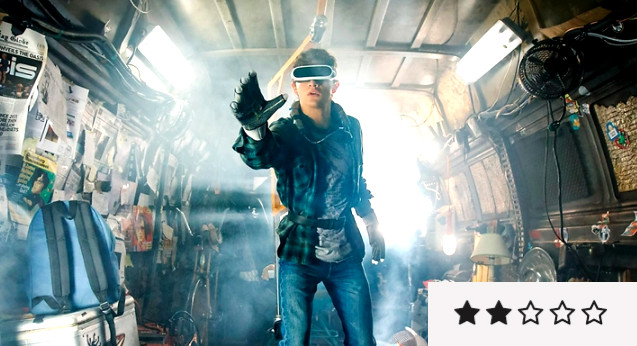Ready Player One review: pretty pictures but little thought in Spielberg’s VR-themed blockbuster


It’s rare for Steven Spielberg to make a film so quintessentially of the times. The veteran filmmaker almost always casts his eye back, if not in historical setting (i.e. The Post, Saving Private Ryan, Schindler’s List, Empire of the Sun, The Colour Purple, Lincoln, Amistad, War Horse, Bridge of Spies and Munich) than in aesthetic sensibility. His middle of the road, picture book style rarely signals an overt influence from the zeitgeist; Spielberg’s films are hermetically sealed.
The same is not true of his latest, the virtual reality-themed Ready Player One: a quintessentially contemporary film. It arrives during the formative years of the world’s first mass market VR movement, following a string of recent science fiction movies that make bold prophecies about human beings and our relationship to technology – including Her, Blade Runner 2049 and Valerian and the City of a Thousand Planets.
Spielberg’s vision of the future does, however, contain a great deal of the past. Adapted from a best-selling page turner from novelist Ernest Cline, Ready Player One is set in 2045, but is stuffed with homages to pop culture from the 1980s. The reason for this is baked into the film’s premise. Dweeby genius James Halliday (Mark Rylance), who invented a virtual second life called OASIS, was obsessed with 80s culture – particularly movies and video games.
The film begins with voice-over narration from protagonist Wade Watts (Tye Sheridan), who lives in a slum-like Ohio neighbourhood, where skyscraper-sized stacks of caravans reach towards the heavens. This society has endured the “corn syrup droughts” and the “bandwidth riots.” Wade gushes about OASIS as if he were a salesman flogging admissions to this seemingly limitless alternate world, where you can ‘be whoever you want to be’.
The story follows a hunt for Easter Eggs that Halliday hid inside his virtual universe; the first person to find them inherits his fortune and the keys to the kingdom. Ben Mendelsohn, for some reason speaking as if he has a sock stuck in his mouth, plays the villain Nolan Sorrento, who is CEO of a VR equipment company that employs violent gamers to find the eggs before anyone else. Sorrento has a ‘paved paradise, put up a parking lot’ type plan to commercialise the virtual realm.
Much of the action takes place in OASIS, Spielberg’s aesthetic this time around having good reason to look polished and unreal – like video game cutscenes. Some SFX-slathered action scenes feel justified in the context of this artificial, gamified world, including a thrillingly staged car race incorporating cameos from a T-Rex and block-demolishing King Kong. Others feel like nothing more than screensavers, literally colourful but creatively vacuous – such as a bombastic battle scene set on ice, involving the Iron Giant.
Ready Player One’s most memorable sequence is elaborate fan fiction for The Shining, the characters searching for clues in a virtual reconstruction of the Overlook Hotel. Spielberg’s approach combines earnest love for the medium (like Hugo) with excessive nostalgia mongering (like Stranger Things) and shameless brand appropriation (like Pixels). Rather than being fascinated by the possibilities of VR, the director is more interested in creating a retrograde, technology-enabled amusement park. In that sense Ready Player One is another version of Jurassic Park.
The film has some entertaining, well-executed set pieces, but is over-long (140 minutes) and ideologically goofy. Spielberg goes to great lengths to construct a virtual world, only to attach a hokey moral about how ‘real’ reality is just as cool (are you listening, kids?) as the one where you get to fly and cast spells. Yeah, right. This reductive message is the filmmaker admitting intellectual defeat. It’s clear Spielberg is intrigued by VR only in the context of cinematic spectacle; any interesting observations about the virtual realm are incidental.
Find times & tickets to Ready Player One
















